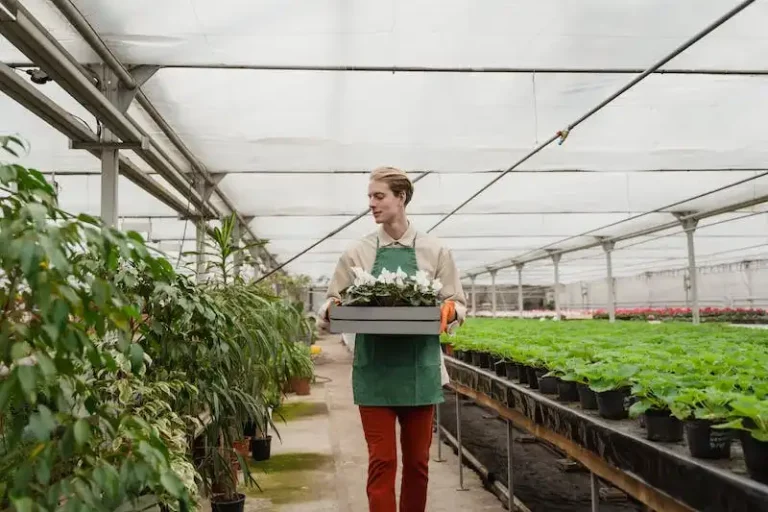If you’re a plant lover, you probably know how exciting it is to see your collection grow. Snake plants, also known as Sansevieria, are a popular choice for houseplants due to their low maintenance and attractive appearance. But what do you do when your snake plant starts growing too big for its original container? That’s where propagation comes in!
There are two main methods of propagating snake plants: division and cuttings. Both methods have their advantages and can be easily done at home. Let’s take a closer look at how to propagate snake plants using these techniques.
Propagation by Division: When your snake plant grows large enough, it will start producing offsets, also known as “pups”. These are small plants that grow at the base of the mother plant. To propagate snake plants by division, simply remove the offsets from the mother plant using a sharp pair of shears or a knife. Make sure to cut the offsets close to the base of the mother plant, allowing some of the rhizomes to remain attached.
Propagation by Cuttings: If your snake plant doesn’t produce offsets, or you simply want to grow more plants from a single cutting, propagation by cuttings is the way to go. Start by selecting a healthy leaf from the mother plant. Using a clean pair of shears, snip the leaf into several pieces, making sure each piece is at least a few inches long. Choose a bright and warm location for the cuttings, but avoid direct sunlight. Place the cuttings in water or a well-draining soil mix and wait for the roots to develop.
Propagation Tips: Whether you’re using division or cuttings, there are a few important steps to follow to ensure successful propagation. First and foremost, make sure to use clean cutting tools to prevent the spread of diseases. Secondly, let the cuttings or divisions dry out for a few days before planting them. This allows the wounds to callous over and helps prevent rot. Lastly, snake plants are known for their tolerance to a wide range of conditions, but it’s best to keep the temperature between 70-90°F (21-32°C) during the propagation process.
By following these simple steps, you can easily propagate snake plants and expand your collection. Whether you choose division or cuttings, the result will be new, healthy plants that can be proudly displayed in your home.
Sansevieria Cylindrica Care: Growing African Spear
Sansevieria cylindrica, also known as the African Spear or Spear Sansevieria, is a unique and striking plant with long, cylindrical leaves that resemble spears. If you’re fascinated by its architectural beauty and are interested in growing this plant in your home, check out these care tips:
- Temperature: Sansevieria cylindrica can tolerate a wide range of temperatures, from as low as 50°F (10°C) to as high as 85°F (29°C). However, it prefers temperatures between 70-90°F (21-32°C) for optimal growth.
- Light: African Spears prefer bright, indirect light. Place them near a window that doesn’t receive direct sunlight, as too much sun can scorch the leaves. If you notice the plant getting leggy or the leaves losing their variegation, it may indicate insufficient light.
- Watering: Snake plants are drought-tolerant and can easily rot if overwatered. Allow the soil to dry out between waterings and water sparingly. It’s better to underwater than overwater your African Spear.
- Soil: Sansevieria cylindrica prefers a well-draining soil mix to prevent root rot. You can use a cactus or succulent soil mix and add perlite or coarse sand for better drainage.
- Fertilizer: Feed your African Spear with a diluted, balanced houseplant fertilizer once every two to four months during the growing season (spring and summer). Avoid fertilizing during the winter months, as the plant is dormant and won’t require extra nutrients.
- Propagation: Sansevieria cylindrica can be propagated through division or leaf cuttings. Divide the plant by separating the offsets or pups from the mother plant. For leaf cuttings, snip a leaf into several pieces and place them in water or in a fresh potting mix. Allow the cuttings to form roots before watering.
- Pests and Diseases: Snake plants are generally resistant to pests and diseases. However, overwatering can lead to root rot, while underwatering can cause the tips of the leaves to turn brown. If you notice any issues, adjust your watering routine accordingly.
Now that you know how to care for your Sansevieria cylindrica, you can enjoy the beauty of this unique plant in your home. Its gray-green leaves and architectural shape make it an excellent addition to any indoor space.
Quick Care Guide
If you’re interested in propagating snake plants, here are some quick care tips to help you get started:
| Propagation Methods | There are a few different methods for propagating snake plants, including division and cuttings. Choose the method that you think will work best for you. |
|---|---|
| Division | When dividing snake plants, make sure to completely rinse the roots to remove all the old soil. Cut each division and repot them in separate pots. |
| Cuttings | If you choose to propagate snake plants from cuttings, make sure to take a healthy cutting with at least 3 cylindrical leaves. Place the cutting in water and watch as it grows roots. |
| Soil and Watering | Snake plants are very tolerant of different soil types. Use a well-draining soil mixture and water sparingly, as snake plants can easily be overwatered. Check the soil moisture before watering again. |
| Light and Humidity | Snake plants prefer bright, indirect light and can tolerate low light conditions. They are also tolerant of a wide range of humidity levels, making them a great addition to any home. |
| Fertilizer | Use a balanced liquid fertilizer for snake plants, but be careful not to over-fertilize. A diluted solution applied once every few months is sufficient. |
| Additional Tips | Keep an eye out for signs of overwatering, such as yellowing leaves or rot. If your snake plant starts to show signs of damage, explore potential solutions to keep it healthy. Make sure to clean the leaves occasionally to remove dust and keep them looking beautiful. |
With these tips, you can successfully propagate and care for your snake plants. Enjoy watching them grow and thrive in your home!
All About African Spear
The African Spear, also known as Sansevieria cylindrica, is a species of snake plant that is native to West Africa. It is a popular houseplant due to its unique cylindrical shape and easy care requirements.
One of the pros of the African Spear is its ability to propagate through cuttings. You can use the pups, or offsets, that grow from the base of the plant to create new plants. This method is less time-consuming and can result in new plants with the same variegation as the mother plant.
To propagate the African Spear, choose a healthy plant with offset pups growing from the base. Carefully remove the offsets by cutting them at the base with a clean knife or shears. Make sure to choose offsets that have roots already forming.
After removing the offsets, you can plant them directly into a well-draining soil mix. A mix of perlite and compost works well for snake plants. Make sure the soil is slightly moist but not overly wet to avoid rotting.
Place the newly planted offsets in a bright location, but avoid direct sunlight as it can damage the leaves. A window with filtered light is ideal. Keep an eye on the soil moisture and water when the top inch of the soil feels dry.
Although the African Spear is a relatively easy plant to care for, it can still face some common problems. One problem you may encounter is the leaves turning slimy or mushy. This can be due to overwatering or prolonged exposure to wet soil. To avoid this, make sure to check the soil moisture and allow it to dry out between waterings.
If you notice individual leaves or stalks underwater, remove them to prevent further damage and rotting. Additionally, be careful not to underwater the plant as it can lead to dehydration and brown tips.
If you have any questions about caring for your African Spear, ask a plant care expert or consult a gardening guide. There are many resources available that can provide further tips and methods for propagation.
In conclusion, the African Spear is an attractive houseplant that can easily be propagated by division or cuttings. Its unique cylindrical shape and variegation make it a popular choice for plant enthusiasts. Whether you’re a beginner or an experienced gardener, the African Spear can thrive in a variety of conditions and add beauty to any home.
Sansevieria Cylindrica Care
Sansevieria cylindrica, also known as the cylindrical snake plant or African spear plant, is a popular houseplant known for its unique appearance and easy care requirements. Here are some tips to help you keep your Sansevieria cylindrica healthy and thriving:
- Light: Sansevieria cylindrica prefers bright, indirect light. Place it near a sunny window, but avoid exposing it to direct sunlight for long periods of time.
- Watering: This plant is drought-tolerant and prefers to dry out between waterings. Water it only when the top inch of soil is dry, and make sure not to overwater. It’s better to underwater than overwater.
- Temperature: Sansevieria cylindrica prefers warm temperatures between 70-90°F (21-32°C). Keep it away from cold drafts or extreme temperature fluctuations.
- Humidity: This plant is tolerant of low humidity levels, making it suitable for most indoor environments.
- Soil: Use a well-draining potting mix for your Sansevieria cylindrica. A mix of equal parts peat moss, perlite, and compost works well.
- Propagation: Sansevieria cylindrica can be propagated through division or cuttings. Cut the plant into several pieces, making sure each piece has roots and leaves. Allow the cuttings to dry for a few days before planting them in fresh potting soil.
- Pruning: If your Sansevieria cylindrica starts to look unruly, you can prune it back to keep it in shape. Simply cut off the unwanted leaves or runners using clean and sharp pruners.
- Fertilizer: Sansevieria cylindrica is a low-maintenance plant that doesn’t require much fertilizer. Use a balanced houseplant fertilizer once every 2-3 months during the growing season.
By following these care tips, you can ensure that your Sansevieria cylindrica stays healthy, vibrant, and adds a touch of natural beauty to your home or office space.
Light Temperature
Light and temperature play an important role in the successful propagation of snake plants. Here are some tips to consider:
- Light: Snake plants prefer bright, indirect light. They can tolerate low light conditions but will grow more slowly. Avoid direct sunlight, as it can damage the leaves.
- Temperature: Snake plants are quite tolerant when it comes to temperature. They can thrive in a wide range, from 55 to 85 degrees Fahrenheit (13 to 29 degrees Celsius). However, they prefer temperatures around 70 degrees Fahrenheit (21 degrees Celsius).
If you’re propagating snake plants, keep in mind the following considerations:
- Light: Young snake plants that are just rooted should be placed in bright, indirect light. Avoid direct sunlight, as it can cause damage to the delicate new roots.
- Temperature: During the initial stages of propagation, maintain a temperature of around 70 degrees Fahrenheit (21 degrees Celsius). This will help in the successful growth of the new plant.
When it comes to the care of your snake plant, here are some troubleshooting tips:
- Light: If your snake plant’s leaves turn cylindrical instead of tubular, it’s a sign that it’s not getting enough light. Move it to a brighter location.
- Temperature: If the leaves of your snake plant are turning yellow and slimy, it may be an indication of over-watering or too low temperature. Check the moisture level in the soil and adjust the temperature accordingly.
If you’re repotting your snake plant, make sure to provide proper drainage in the new container. Snake plants prefer well-draining soil and can suffer from root rot if overwatered.
In terms of humidity, snake plants are quite tolerant and do not require high humidity levels. However, providing moderate humidity can help promote healthier growth.
In conclusion, providing the right light and temperature conditions is crucial for the successful propagation and care of snake plants. By paying attention to these factors, you can ensure the best possible outcome for your plants.



